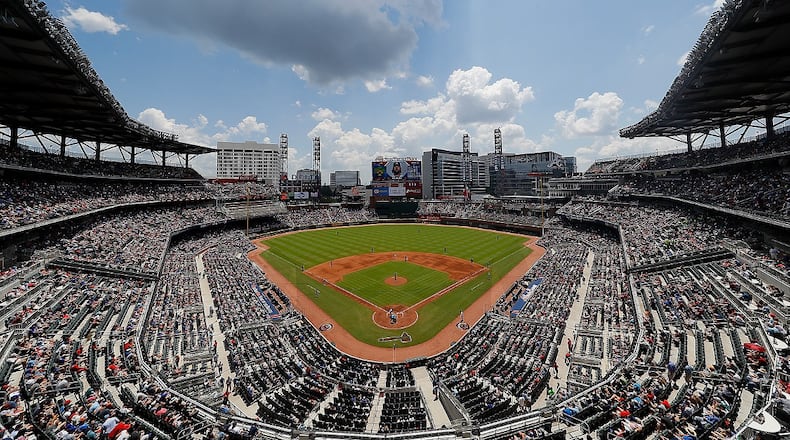After failing to reach an agreement with the Braves, right-hander Carter Stewart enrolled at Eastern Florida State College to begin what’s expected to be a brief collegiate career. The Braves’ likelihood of receiving a compensation pick (No. 9 overall) in the next draft remains up in the air.
Eastern Florida State is a junior college in Brevard, Fla.
The Braves drafted Stewart eighth overall in June. Scouting director Brian Bridges said Stewart was the No. 1 overall player on their board. His selection continued showcasing the franchise’s affinity for prep pitchers, especially under Bridges’ guidance.
Both sides anticipated reaching an agreement, possibly within the week following his selection. But the Braves were concerned about an injury to his right wrist discovered after the draft. That complicated negotiations to the point a deal wasn’t reached before the July 6 deadline.
Potential draftees aren’t required to take pre-draft physicals, unlike other sports. The scouting bureau and medicals forms – completed by the players themselves – are the primary means by which teams are informed of players’ health before the draft. It additionally places a great deal of emphasis on what scouts can gather about the individual, given that legally all 30 franchises should be provided the same information (or none, if the player declines) through the process.
In usual circumstances, a team is awarded a pick in the next draft if it’s unable to sign its draftee. That requires the franchise offer 40 percent of a player’s allotted slot value (in this case, the Braves would’ve needed to offer $1,992,280). The MLB Players’ Association filed a grievance, stating the Braves didn’t reach that 40 percent threshold, The Athletic reported in October.
Stewart, who switched to the Boras Agency following the negotiation breakdown, sought free agency. It would’ve allowed teams to freely bid for his services rather than be held within the confines of draft regulations.
His case was outlined in the collective bargaining agreement, which says if a draftee fails a club-administrated physical, and the team does not offer a bonus at the 40-percent threshold, the player is granted free agency and the team won’t receive a compensation pick.
There’s no timetable for a resolution, but it will be a significant decision for the Braves organization.
A high draft pick alone is a premium asset, but the team’s limitations on the international market further stress the domestic draft’s importance. Losing a top-10 pick after seeing so much prospect depth exit last offseason as penalty for the previous regime’s corruption would be a blow for an organization trying to keep its system strong while trying to contend in the present.
Stewart opted for junior college rather than Mississippi State, to which he committed before the draft, because he’ll be draft eligible again in 2019. Stewart’s age, build and noted curveball could easily put him back into the top 10 selections.
The Braves also own the 21st pick of the first round this year, a result of their 90-win season.
About the Author
Keep Reading
The Latest
Featured



